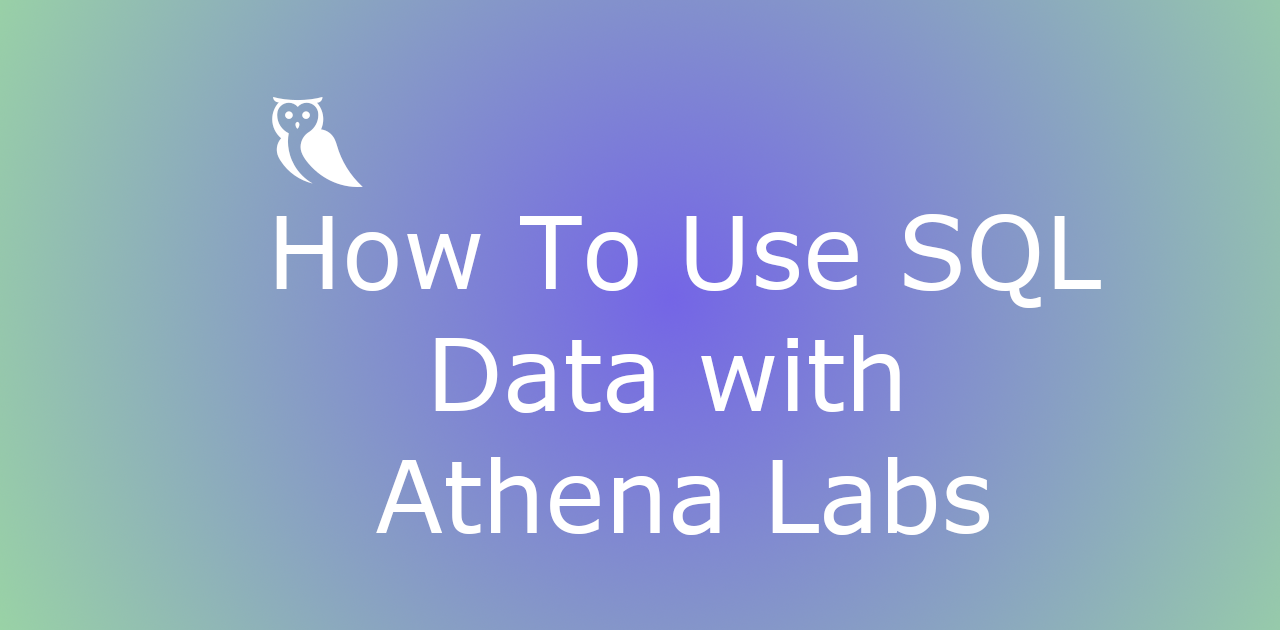How to Extract Data from SQL Server for Analysis in Athena Labs
Learn how to extract data from SQL Server for analysis in Athena Labs, maximizing efficiency and enhancing data-driven decision-making.

In today’s data-driven world, organizations rely heavily on data analysis to make informed business decisions. One popular tool for data analysis is Athena Labs, which provides a powerful platform for querying and analyzing data. However, before we can leverage Athena Labs for analysis, we need to extract data from our SQL Server database. In this article, we will explore the process of extracting data from SQL Server and preparing it for analysis in Athena Labs.
Table of Contents
- Introduction to Data Extraction
- Setting up SQL Server Connection
- Extracting Data from SQL Server
- Transforming and Cleaning the Extracted Data
- Analysis in Athena Labs
- Conclusion
Introduction to Data Extraction
Data extraction is the process of retrieving data from a database system and preparing it for further analysis. In the case of extracting data from SQL Server, we have several options available to us. One common approach is to use SQL queries to retrieve the required data directly from the database. Another option is to export the data as a CSV or Excel file and then import it into a data analysis tool like Athena Labs.
Setting up SQL Server Connection
Before we can extract data from SQL Server, we need to establish a connection to our database. To do this, we will need the following information: Server name: The address or name of the SQL Server instance. Authentication method: Whether we will be using Windows Authentication or SQL Server Authentication. Username and password: If we are using SQL Server Authentication, we will need the appropriate credentials. Once we have this information, we can proceed with setting up the connection in Athena Labs. Here are the steps to follow: Open Athena Labs and navigate to the Data Sources section. Click on “Add New Data Source” and select SQL Server from the list of available options. Enter the server name and choose the appropriate authentication method. Provide the necessary credentials if required. Test the connection to ensure it is successful.
Extracting Data from SQL Server
With the connection established, we can now proceed with extracting the data from SQL Server. The process can be divided into the following steps: Identify the tables or views: Determine which tables or views contain the data you need for analysis. Write SQL queries: Use SQL queries to retrieve the required data from the identified tables or views. You can use visual query builders or write queries manually, depending on your preference and expertise. Extract the data: Execute the SQL queries to extract the data from SQL Server. You can choose to extract all the data or apply filters to retrieve specific subsets of data.
Transforming and Cleaning the Extracted Data
The data extracted from SQL Server may not be in the desired format for analysis in Athena Labs. Therefore, it is essential to transform and clean the data before proceeding with the analysis. Here are some steps to consider: Data validation: Check for any inconsistencies or errors in the extracted data. Identify missing values, duplicates, or data that does not conform to the expected format. Data cleansing: Remove or correct any invalid or inconsistent data. This may involve filling in missing values, converting data types, or deleting redundant entries. Data formatting: Ensure that the extracted data is in the proper format for analysis. This may involve reformatting dates, numbers, or text fields to match the requirements of Athena Labs. Data aggregation: If the extracted data contains redundant or repetitive entries, consider aggregating the data to reduce redundancy and improve analysis performance.
Analysis in Athena Labs
Once the extracted data has been transformed and cleaned, it is ready for analysis in Athena Labs. Here are some features and capabilities offered by Athena Labs for data analysis: Querying capabilities: Use SQL-like queries to retrieve specific data or perform complex analysis tasks. Visualization tools: Create visualizations, such as charts and graphs, to gain insights from the data. Statistical analysis: Perform statistical calculations, such as mean, median, or standard deviation, to understand patterns and trends in the data. Machine learning: Apply machine learning algorithms to the data for predictive analysis or classification tasks. Collaborative environment: Share analysis results with teammates or stakeholders, allowing for collaboration and discussion. As you explore and analyze the data in Athena Labs, remember to document your analysis process and findings. This documentation will be valuable for future reference and sharing insights with others.
Conclusion
Extracting data from SQL Server for analysis in Athena Labs allows organizations to leverage the power of data analysis to make informed business decisions. By following the steps outlined in this article, you can extract, transform, and prepare your data for analysis in Athena Labs. Remember to validate, cleanse, and format your data to ensure accurate and meaningful analysis results. With the rich set of analysis tools offered by Athena Labs, you can uncover valuable insights and drive data-driven decision-making.